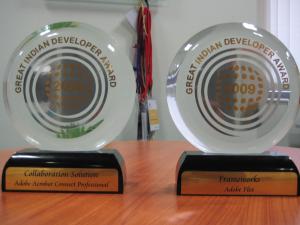This is Part 1 of a 3 part series:
Web Services are an integral part of the SOA infrastructure and also a preferred way of exposing services, especially in the Enterprise. The new Services Wizards feature in Flash Builder 4 makes it extremely simple to work with Web Services.
To work with the Services Wizard which is part of the Data Centric Design feature in Flash Builder 4 ( for connecting to HTTPService, Web Services or Remoting using any back-end technologies like Java, PHP, CF… etc) you need to do the following:
- Add the service
- Configure Return Type (create client-side Model classes by inspecting the service)
- Call the service and bind it to UI Controls
Before I start to explain how to access Web Service (WS) from Flash Builder, let me discuss some aspects of the WS Architecture. A WSDL(Web Service Description Language) Document is what signify how a WS is exposed. On a high-level, each WS has the following:
- Elements
- Complex-types
- Messages
- Operations
Each operation will have an input & output message and each message may be built with an element or complex-types. We will be using this Population WS (click to see the WSDL file) for serving data to our application. We will use the following operations:
- getCountries – to get the various countries for which data is available.
- getPopulation – for getting the population of a selected country.
Let’s get started:
Step 1: Create Project
Begin by creating a new Project [File>New>Flex Project]. Type a name and press finish…

Step 2: Import the Service
In your Flash Builder 4 environment, you will see the new Data/Services Tab like below:

Click on “Connect to Data/ Service” and choose WebService from the pop-up

In the next screen, enter the Service Name (that you want it to be called in your Flex application) and path to WSDL file, which in this case is – [http://www.abundanttech.com/WebServices/Population/population.asmx?WSDL]

If your WSDL is SOAP 1.1 protocol compliant, it will directly show the operations screen (the screenshot after the one below). Otherwise, it will ask you to choose the appropriate SOAP port as below. Remember this screen will only appear if your WDSL is not WSDL1.1 compliant.

Then you can choose the operations that you are interested in. You can either choose just the operations you are interested in or press Select All and press “Finish”.

This will give you a Data/Services tab with all the operations imported and configured…

A moment to explain the above operation…
Flash Builder introspects the WSDL and the selected operations and generates the required classes. But you will notice that while the return type for getPopulation() is created as a client side model class called Population, getWorldPopulation() has a return type of Object. The introspecter does the following:
- If the operation is well formed Flash Builder 4 creates the required classes (as in the case of getPopulation() method it creates a Population Class)
- If the operation is not well formed then Flash Builder 4 keeps the return type as Object (as in the case of getWorldPopulation() Method)
Since WSDL itself defines the input and output types, it will create the required classes provided the operations are well formed.
The Part 2 of this series will deal with binding this service to UI and creating an application.



 Posted by raghunt
Posted by raghunt 




















